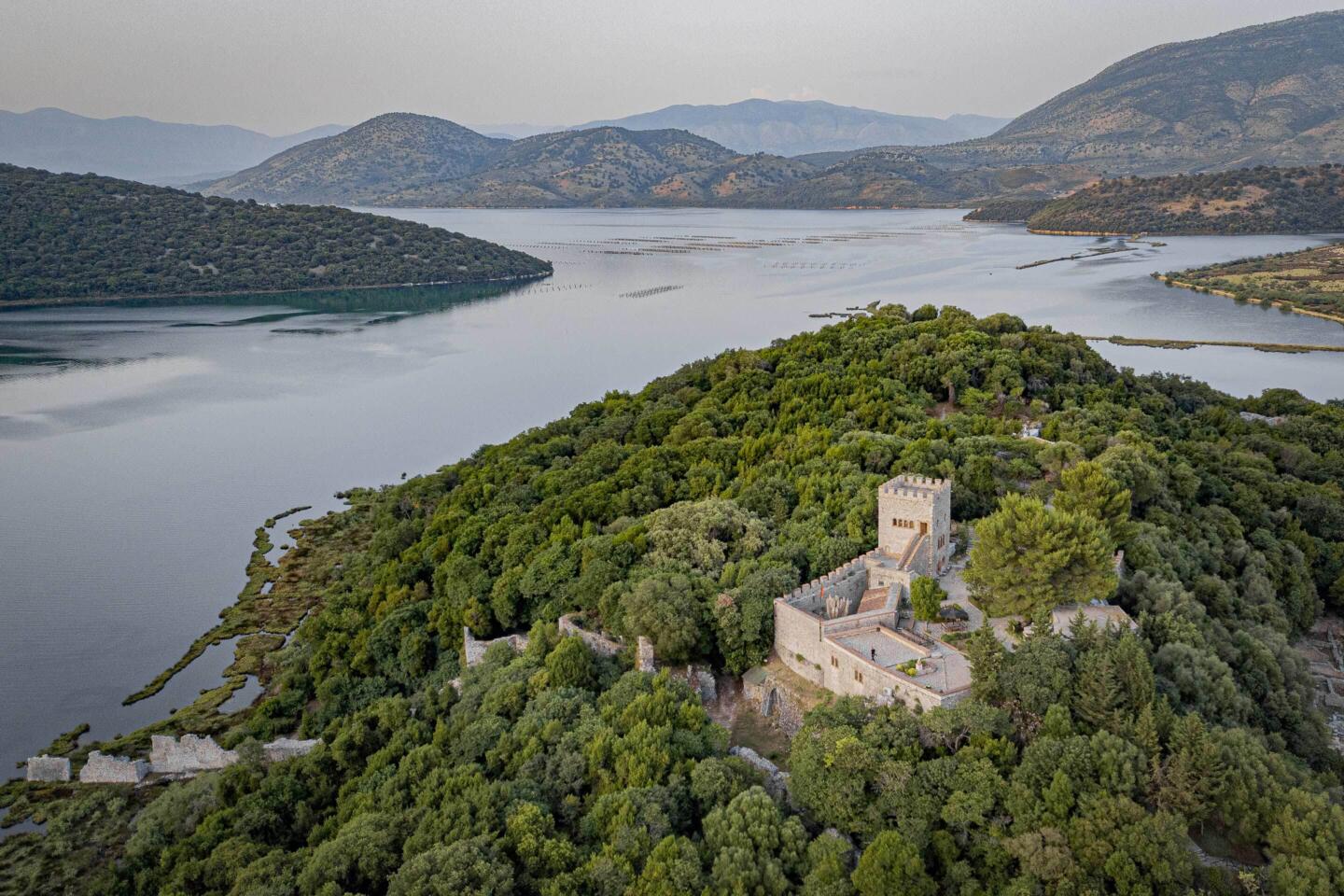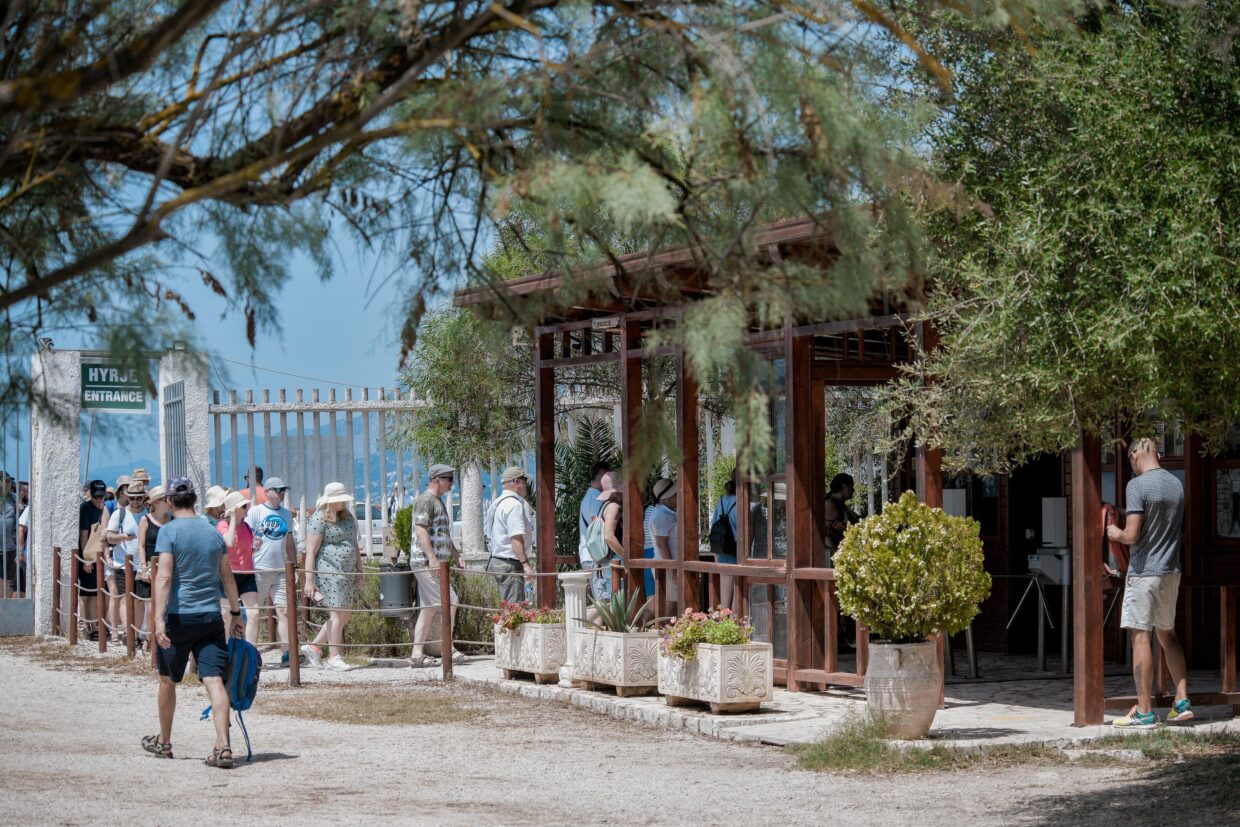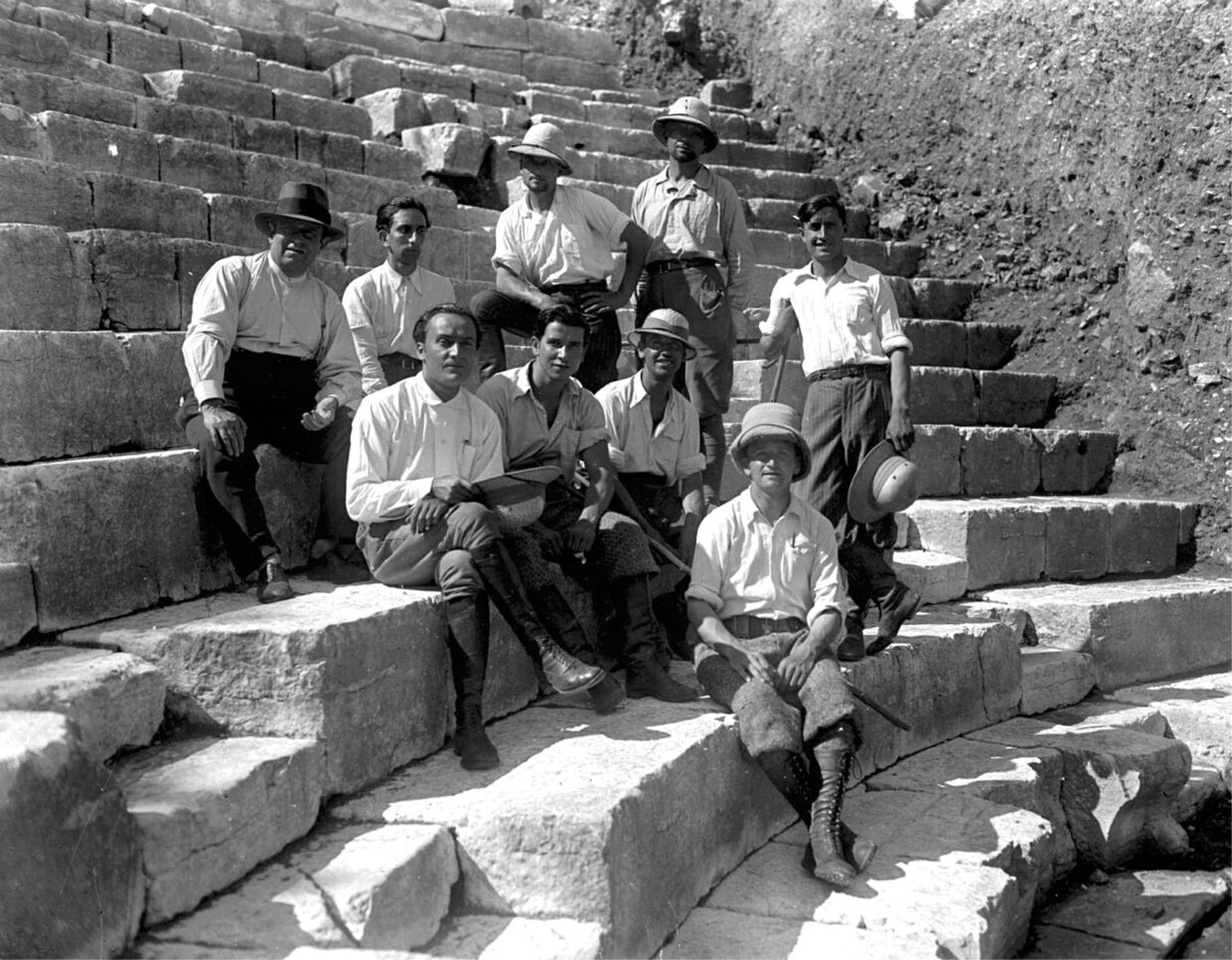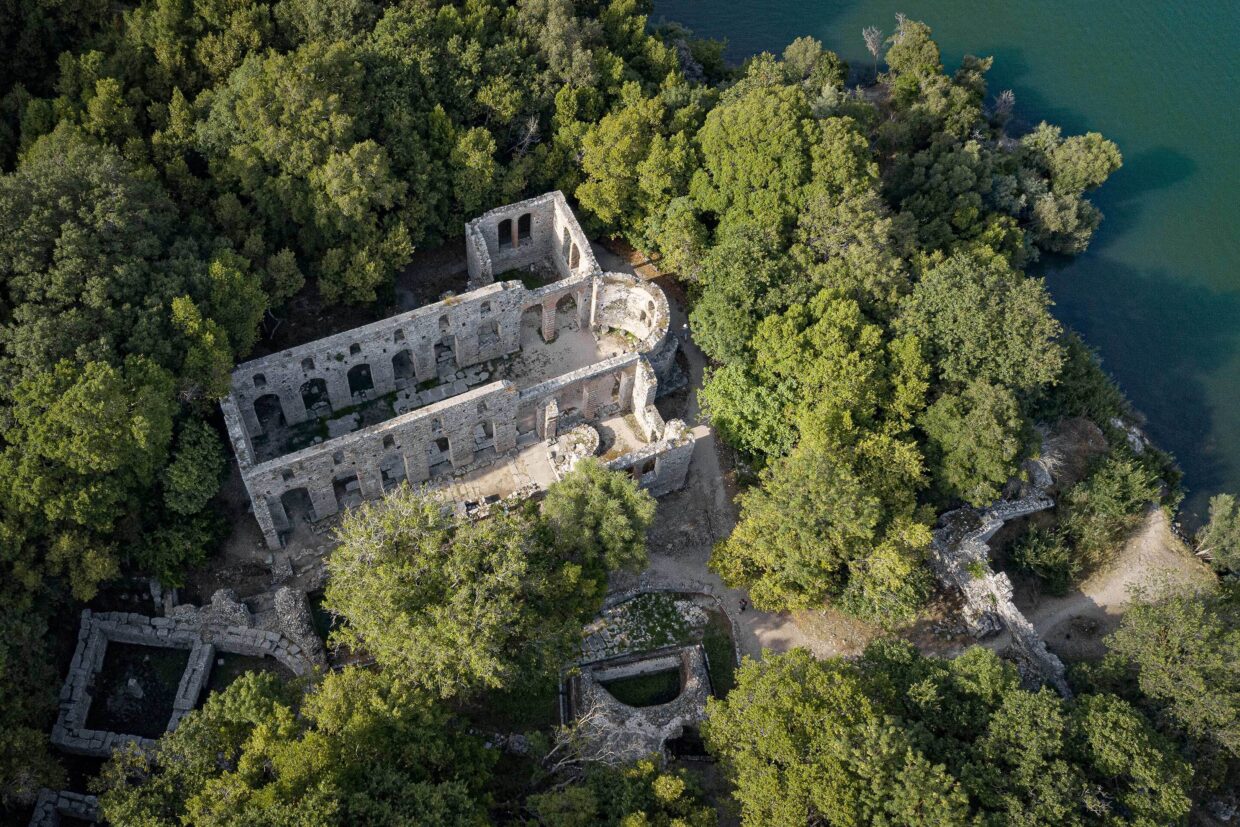Overview

The ancient city of Butrint in southern Albania has been revered as a rare and inspirational place for much of human history; it is the most significant archaeological site in Albania and its chief cultural attraction.
To visit the surviving Epirot Theater, Roman Forum and early Byzantine Baptistery, along with other Hellenic, Roman, Byzantine, Angevin, Venetian and Ottoman monuments, is to tour a luminous timeline of Mediterranean culture and thought — all at a human scale and in the loveliest landscape and seascape.
Clockwise from top left: Existing site entrance and ticket office; View from Butrint's ancient city to the Venetian Castle; Ferry crossing across the Vivari Channel; Epirot Theater in the ancient city
Inscribed as a UNESCO World Heritage Site in 1992, Butrint is located approximately 20 kilometers from the modern city of Sarandë, overlooking the Straits of Corfu. The ancient city is set within the wider Butrint National Park, an unspoilt and spectacular landscape endowed with hills, lakes, wetlands, salt marshes, plains, reed beds and coastal islands.
In 2020, recognizing Butrint’s vulnerability in the face of increasing visitor numbers (now multiplying post-pandemic) and environmental pressures, the Albanian Government approved the Butrint National Park Integrated Management Plan (2020−2030) to safeguard the site and promote sustainable community-based and environmentally sensitive tourism. The Plan led to the creation of a new autonomous body to oversee the site, the Butrint Management Foundation, which is chaired by the Ministry of Culture of the Republic of Albania.
The Butrint National Park Visitor Center International Design Competition focused on a key element of the Plan: a visitor center of up to 1,000 square meters. The center will receive, welcome and orient visitors, interpret the site, convey the Outstanding Universal Values of this World Heritage Site, and be a gateway to the wider National Park. It will also be a regional hub to promote other nearby natural and cultural visitor attractions.
The visitor center will be located approximately 1.5 kilometers from the entrance to the ancient city, in a spectacular location with panoramic views overlooking the Vivari Channel and the Mediterranean Sea.
Practically, the center will serve as an educational forum, a workplace for Foundation staff and, importantly, be a community gathering place; it will also provide refreshment and a shop. Other aspects of the competition included a new or extended ticket office (including staff workspaces and support facilities); improvements to the core heritage area entrance and secure boundary; wayfinding and interpretation; and improved mooring facilities.
Initial funding of USD $2.45 million has been secured, with the final budget (up to USD $4 million) dependent on the development of the winning design proposal and further engagement with project stakeholders.
Luigi Maria Ugolini with his team from the Italian Archaeological Mission in 1930. PHOTO: Institute of Archaeology, Tirana
The competition also encouraged participants to consider further opportunities within the wider park in the form of a landscape visioning masterplan, including a connectivity plan for the area between the visitor center and the core heritage area entrance. A proactive and forward-thinking approach to sustainability throughout was key, to tackle the many challenges of the climate emergency, with rising sea levels being a particular threat to Butrint’s low-lying peninsula.
This two-stage competition warmly welcomed submissions from across the globe, from new and emerging studios as well as seasoned ones.
To enter, design teams were required to read the Search Statement, fill out an online form and upload documents detailing their proposed team composition, relevant experience, pre-qualification questionnaire and initial reaction to the project. No design work was expected at stage one.
In December 2022, a shortlist of four teams was selected to compete at stage two and prepare anonymous concept designs. Each finalist team will receive a contribution to expenses of USD $10,000.
The Jury met in April 2023 to evaluate and discuss the final submissions and selected the team led by Kengo Kuma & Associates as the winner of the competition.





